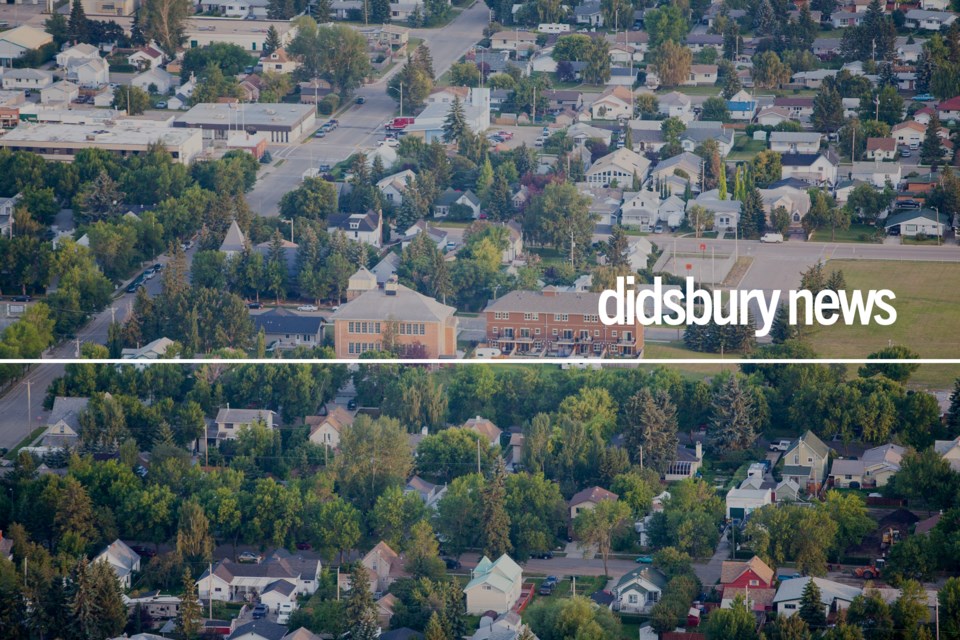DIDSBURY - A public hearing will be held on Nov. 26 regarding the proposed major update of the Didsbury's municipal development plan (MDP) after council gave first reading to Bylaw 2024-12 at a recent regularly scheduled council meeting.
The municipality will also be hosting an informal information session regarding the MDP at the Didsbury Museum on Nov. 13 from 1 to 3 p.m.
Including growth strategy policy areas and related maps, the plan is being updated at the direction of council, with the process to date having included public circulation of the proposed updates.
The provincial Municipal Government Act requires all municipalities to have MDPs in place to provide a policy framework for long-term growth and development
The purpose of Didsbury’s MDP is to guide the future growth and development of the town through the inclusion of a set of broad goals and policies to guide decision made by the town.
“Through this plan, the town commits to a growth management approach that attempts to respond to the needs of the town’s current residents while at the same time not compromising the ability of future residents to meet their needs,” the document states.
“The MDP gives substance to elements of the Town of Didsbury integrated community sustainability plan. This plan has the secondary purpose of implementing the future vision of the community. It is expected the plan will be reviewed and updated as necessary.”
The current MDP was put in place in November 2012 and is being updated.
The updated plan includes town-wide policies in areas such as growth management, economic development, open space and connectivity, mobility, servicing, area structure plans, heritage preservation, emergency and protective services, and intermunicipal cooperation.
Town planner Tracey Connatty told the Albertan that one of the major changes to the plan is the inclusion of growth strategy policy areas.
The policy areas approach to future lands use provides the town with the flexibility to accommodate a wide range of population expansion, while still protecting the different types of neighbourhoods that residents want today and going forward, she said.
The growth strategy policy areas include mature neighbourhoods, central core and entranceway, live-work neighbourhoods and new neighbourhoods.
Regardless of how the population projection scenarios play out, the general approach to growth management focuses on core characteristics: maximize the fiscal productivity of land as part of new development proposals; allows for the efficient cost of services and infrastructure; and balances the tax base between residential and non-residential sources to maintain tax rates at reasonable levels.
According to the plan, mature neighbourhoods represent the traditional core neighbourhoods of the town, including the early suburban development pattern that came with the preliminary expansion of the town in the 1970s and 1980s.
The goal in those neighbourhoods is to “implement a flexible and incremental approach to growth and development to preserve and enhance the town’s assets, infrastructure, community character, fiscal health and environmental resilience.”
The central core and entranceway is applicable to the traditional downtown and represents the greatest mix of uses throughout the town.
The goal in that neighbourhood is to “remain the retain, office and entertainment heart and centre of the town, while enhancing its unique historical character.”
The live-work neighbourhood are areas that are “ intended to be mixed use areas and have typically been associated with industrial users and development, but the feature of industrial land use has changed. While industrial development fits within the area, the intent is to identify space for growth and expansion of large employers.”
The goal of that neighbourhood is to “strengthen the tax base through efficient non-residential growth that contributes to fiscal stability (and) strengthen the perception of Didsbury as a business-friendly community.”
The new neighbourhoods are “areas represented that represent the future land base intended to accommodate housing for the future population growth of the community . The intend is to restore traditional neighbourhood development patterns, with a focus on pedestrian-oriented design that emphasizes multi-modal transportation connectivity.”
The goals of that neighbourhood is to build “a diverse community that appeals to people of all ages, lifestyles, and income levels (and) attract new people into town, which is critical to the town’s financial condition and long-term prosperity.”
The complete draft of the proposed updated MDP is available for viewing on the town’s website.



